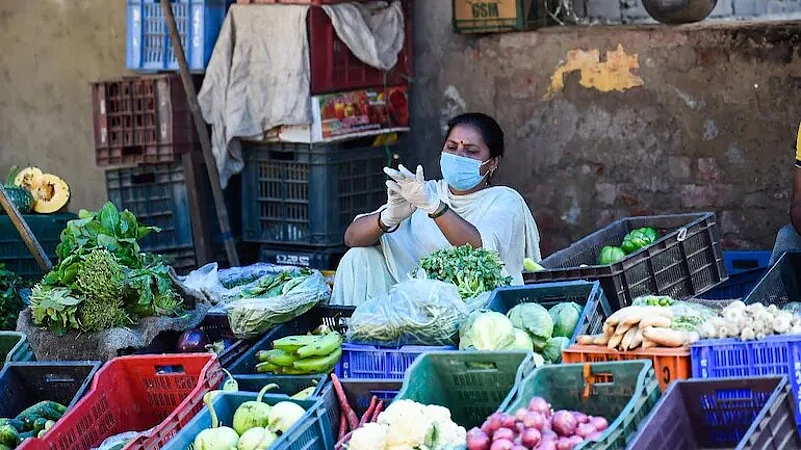Household budgets are once again feeling the pinch as vegetable prices have been rising rapidly over the past few weeks for a variety of reasons. For those observing the Navratri fast, the bigger-than-expected rise in prices of tomatoes, potatoes, green leafy vegetables and most root vegetables such as sweet potatoes and carrots could not have come at a worse time.
“Rise in vegetable prices is not unusual post monsoon, but what is different this time is a combination of factors, including high diesel prices that have contributed 10-15 per cent to the increase in cost,” says Adeel Ahmad Khan, chairman, Azadpur Mandi Agricultural Produce Marketing Committee.
Advertisement
Lower arrivals at the mandi and higher prices are more visible in the case of most vegetables that grow below the soil or close to the ground such as onion, garlic, tomato, potato, spinach, fenugreek, mustard and coriander. This is happening at a time when the market usually offers plenty leafy vegetable options to consumers.
The late withdrawal of monsoon this year after bouts of heavy showers in some parts of Delhi, Haryana, Punjab and Uttar Pradesh, resulting in water-logging in the fields, has caused considerable damage to vegetable crops in particular. Vegetables from these states, along with those grown within and on the outskirts of Delhi, serve the demand in the National Capital Region (NCR).
Advertisement
Currently, there is around 30 to 35 per cent drop in the arrivals of most vegetables in the Azadpur Mandi, the largest wholesale market for fruits and vegetables in Asia. Azadpur Mandi caters to the needs of most states in the northern region, and also that of traders from across the country as well as exporters. In the case of most leafy vegetables, the shortfall in arrivals is around 50 per cent.
Mahender Sanpal, president of Vegetable Traders Association, Delhi, says that while prices of all vegetables have risen, in some cases “it has almost doubled in the past three weeks”. “For instance, palak (spinach), which cost just Rs 10 per kg around 20 days ago, is now selling in the mandi for Rs 50 per kg. Tomato prices have risen from Rs 15-20 to Rs 40-50, and in retail it is selling for over Rs 70 per kg in most localities,” says Sanpal.
In the case of onion, Khan says the mandi price has risen by Rs 6-7 per kg from earlier levels of Rs 20-25 per kg, while retail prices in some markets has crossed Rs 50 per kg. The new onion crop is yet to arrive in the market. Currently, NCR is receiving supplies from storages in Nashik. The high transportation charges due to high diesel prices are adding to the delivered costs, market experts point out.
The shortage scenario is likely to continue for another 20 days until fresh crops from fields re-sown by farmers start arriving. Tomato prices may take more time to come down. The only positive factor is that there has been no drop in arrival of fruits, which has helped to maintain their price levels. It is another matter that fruits prices in the past two years have been much higher than in the previous years.




















